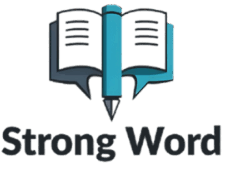The 30-06 Springfield cartridge is a versatile and powerful round beloved by hunters, target shooters, and military historians alike. Its long-standing popularity stems from its excellent performance across a range of applications, making it a favorite for reloading enthusiasts. Whether you are a seasoned reloader or just starting, understanding the nuances of reloading 30-06 bullets can greatly enhance your shooting experience.
Reloading your own ammunition offers several benefits, such as cost savings, the ability to fine-tune loads for specific firearms, and the satisfaction of crafting your own rounds. However, the process requires careful attention to detail and a solid understanding of the components involved. When it comes to 30-06 reloading bullets, there are several key factors to consider.
Firstly, selecting the right bullet is crucial. The 30-06 Springfield can accommodate a wide variety of bullet types and weights, each suited to different purposes. For hunting, many prefer heavier bullets in the 165-180 grain range, which offer excellent penetration and energy transfer. Target shooters, on the other hand, might opt for lighter bullets that provide higher velocity and flatter trajectories.
The type of bullet you choose also plays a significant role. Full metal jacket (FMJ), soft point, and hollow point bullets each have distinct characteristics and advantages. FMJ bullets are often used for target practice due to their affordability and consistent performance. Soft points and hollow points are favored for hunting because they expand upon impact, increasing stopping power.
Another important aspect of reloading 30-06 bullets is the choice of powder and primers. Different powders can affect the velocity and trajectory of the bullet, and experimenting with various types can help you find the perfect load for your specific needs. Primers, while often overlooked, are equally important as they ignite the powder. Ensuring you have the right combination of primer and powder is crucial for optimal performance.
Paying attention to the overall length of the cartridge is essential as well. Each firearm may have slightly different chamber dimensions, and ensuring your reloaded rounds fit properly can prevent malfunctions and improve accuracy. Consulting reloading manuals and using calipers to measure your cartridges can help maintain consistency and safety.
For those looking to delve deeper into the specifics of 30-06 reloading bullets, numerous resources are available online. Websites such as this one offer a wealth of information, including detailed guides, tips, and recommendations for both beginners and experienced reloaders. These resources can help you navigate the complexities of reloading and enhance your understanding of the process.
Additionally, purchasing high-quality components is vital to successful reloading. Ensuring that you buy from reputable suppliers can make a significant difference in the quality of your reloads. The quality of your components will directly impact the reliability and precision of your ammunition.
If you’re considering reloading your own 30-06 rounds, it’s important to remember that safety should always be your top priority. Always follow recommended guidelines and safety protocols, and never attempt to exceed the maximum loads specified in reloading manuals. Taking the time to learn and implement safe practices will ensure that your reloading experience is both rewarding and secure.
In summary, reloading 30-06 bullets is a rewarding endeavor that allows shooters to tailor their ammunition to their specific needs. By choosing the right components and following best practices, you can achieve exceptional performance and accuracy. For those interested in exploring the world of 30-06 reloading bullets, this guide provides valuable insights and information to help you get started. With patience and attention to detail, you can enjoy the many benefits that reloading offers.

